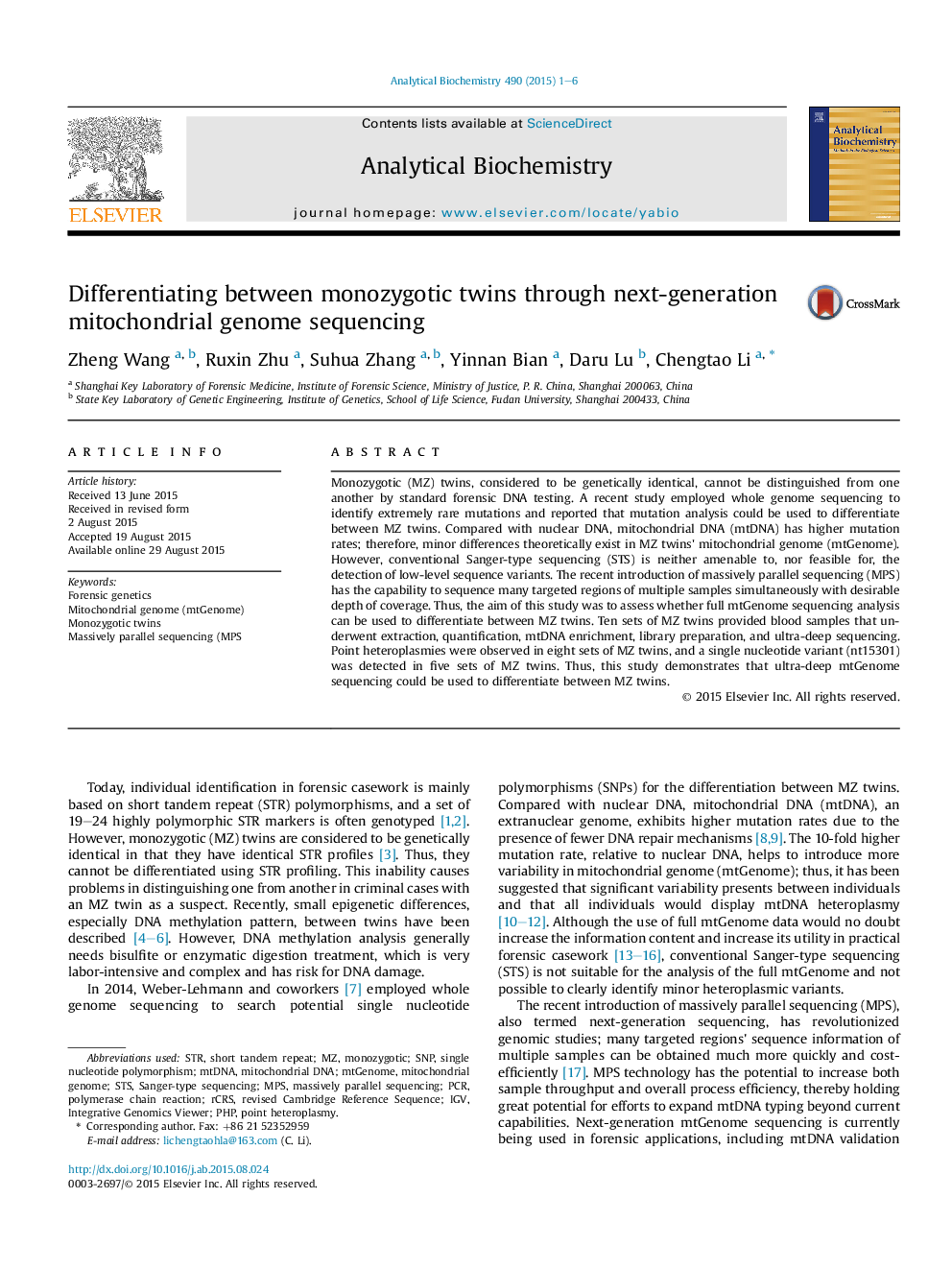| Article ID | Journal | Published Year | Pages | File Type |
|---|---|---|---|---|
| 7557965 | Analytical Biochemistry | 2015 | 6 Pages |
Abstract
Monozygotic (MZ) twins, considered to be genetically identical, cannot be distinguished from one another by standard forensic DNA testing. A recent study employed whole genome sequencing to identify extremely rare mutations and reported that mutation analysis could be used to differentiate between MZ twins. Compared with nuclear DNA, mitochondrial DNA (mtDNA) has higher mutation rates; therefore, minor differences theoretically exist in MZ twins' mitochondrial genome (mtGenome). However, conventional Sanger-type sequencing (STS) is neither amenable to, nor feasible for, the detection of low-level sequence variants. The recent introduction of massively parallel sequencing (MPS) has the capability to sequence many targeted regions of multiple samples simultaneously with desirable depth of coverage. Thus, the aim of this study was to assess whether full mtGenome sequencing analysis can be used to differentiate between MZ twins. Ten sets of MZ twins provided blood samples that underwent extraction, quantification, mtDNA enrichment, library preparation, and ultra-deep sequencing. Point heteroplasmies were observed in eight sets of MZ twins, and a single nucleotide variant (nt15301) was detected in five sets of MZ twins. Thus, this study demonstrates that ultra-deep mtGenome sequencing could be used to differentiate between MZ twins.
Keywords
Mitochondrial genome (mtGenome)revised Cambridge Reference SequencerCRSSTRIGVPHpSTSMitochondrial DNAMassively parallel sequencingShort tandem repeatMonozygotic twinsmtDNAIntegrative Genomics ViewerMonozygoticMPspolymerase chain reactionPCRSingle nucleotide polymorphismSNPForensic geneticsMitochondrial genome
Related Topics
Physical Sciences and Engineering
Chemistry
Analytical Chemistry
Authors
Zheng Wang, Ruxin Zhu, Suhua Zhang, Yingnan Bian, Daru Lu, Chengtao Li,
